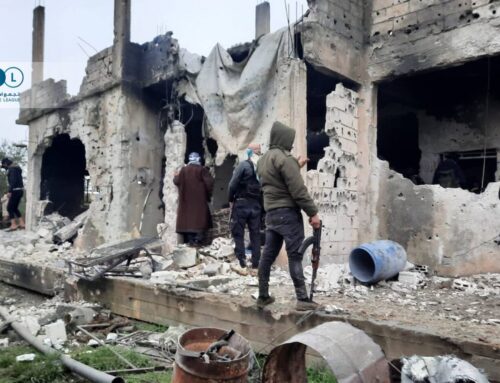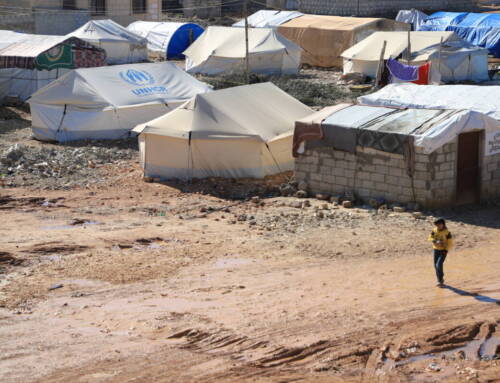‘Israeli forces have increased patrols along the border’
March 21, 2013 SAS News reporter Ahmed Kwider spoke with […]
21 March 2013
March 21, 2013
SAS News reporter Ahmed Kwider spoke with Shamel Golani, a correspondent with the opposition Sham News Network based in Qunaitra province to find out more about events along the Golan Heights border.
Q: Why is the bombardment centered on Jubata al Khashab and Jamla bordering villages?
A: The regime focuses on the bordering areas across the Syrian-Israeli borders in what seems to be an attempt to keep these areas unarmed. They bomb areas held by the FSA like Jubata al Khashab but at the same time they don’t other liberated villages like Memetnne, Mashara, Jaba, Um Batena. They seem to be trying to keep the state’s authority over the border.
Q: Who is the armed opposition in the Golan? Are the FSA or jihadists? Are they both Syrians and Arabs?
A: There are many FSA brigades and battalions in the province. They’re mostly defected soldiers and some of its citizens who volunteered in forming the military council in Quneitra. There are also independent Islamic groups like Messiah brigade. Jabhat al-Nusra has about 100 jihadists in the province, most of them are the sons of Golan.
Q: Is there any cooperation between the UNIFIL [UNDOF?] and the government army?
A: There have been some cases where UNDOF sided with the government army. They supplied their troops surrounded by the FSA with food and provided medical aid for their injured. Sometimes UNDOF withdrew from their observation posts when the army invaded some villages, and only returned after the invasion ended. The ignored the citizens appeals for food and medical supplies when their villages were surrounded by the government army. In Beerajam they refused to switch off their projectors which deprived the FSA from operating at night.
Q: According to American press, some of the civilians in Golan seek refuge in Israel. How does that happen?
A: Quite the contrary. Most of the people displaced from the bordering areas seek refuge in the internal areas. We didn’t record any case where a Syrian turned to Israel because of the mine fields and the fence which is difficult to cross.
Q: How do you describe the status of the Israeli army?
A: The Israel forces have increased its patrols across the border and built barricades. For the first time in 40 years we’ve seen a Merkava near the border.
Q: Is there coordination between the Israeli army and the FSA to move the injured to the Israeli side?
A: Seven young men were injured and hid near the fence. The Israel forces arrested them and handed them to the UNDOF. They gave them first aid and then handed them to the Military Security. [Syrian]
In an incident that I witnessed, we were burring two fighters of the FSA near the border at about 2 am. An Israeli patrol sighted us, so the switched on their projectors for us to see until were finished burring.
Q: In the recent months several shells landed on the Israeli side of Golan. How did both sides react to that?
A: Many shells landed inside Israel during the regime’s bombardment on the bordering villages. There were no reactions on part of the Israelis. Also the Israeli air force has violated Syria’s airspace more than 100 times, but the Syrian air defense did not respond.
The most significant indecent that proved cooperation between the Israeli army and the regime is their use of lightning bombs to help the government army during the night fight with the FSA.
Logistic support was clear because the defected officers were accurately targeted by the regime’s artillery. Only Israel had the skies and its observation posts were close to the places where the FSA was active.
Many people told stories about Mercedes automobiles moving between Israel and Syria, which could be considered meetings among generals of both countries.






